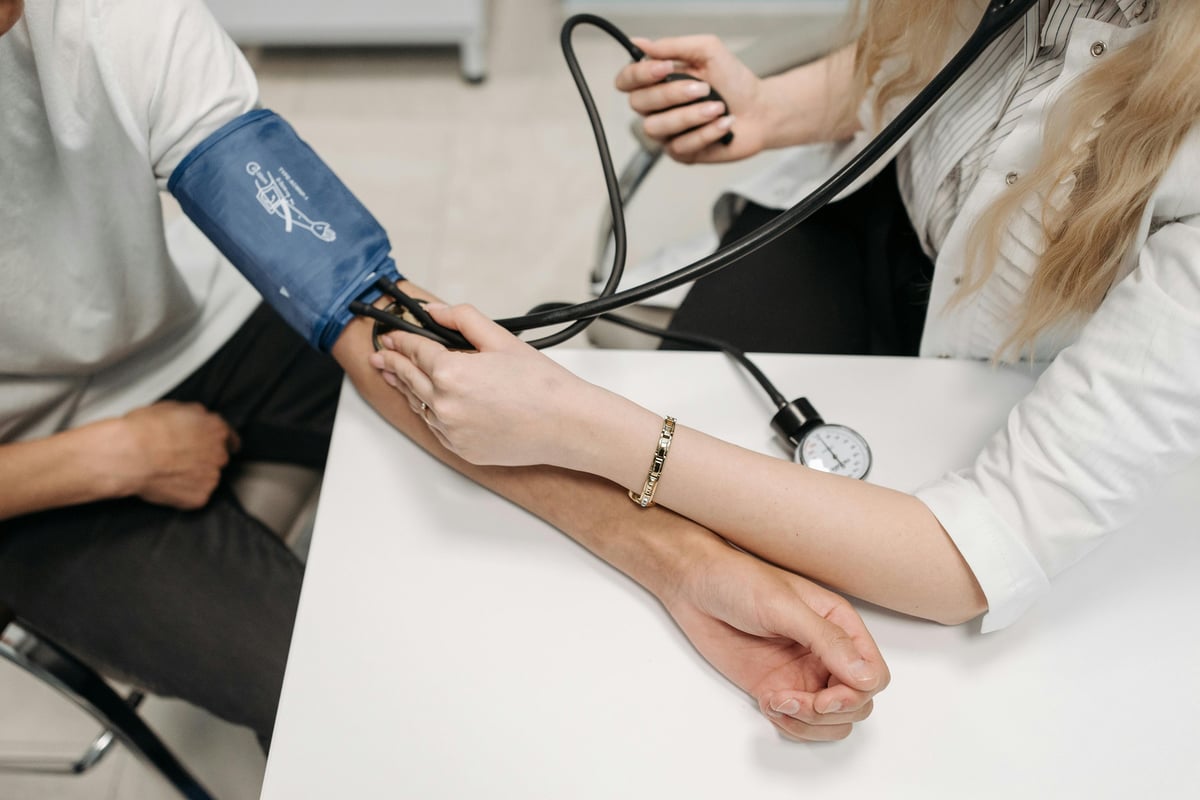Health
Understanding High Blood Pressure: Key Causes and Warning Signs

High blood pressure, often referred to as the ‘silent killer,’ poses significant health risks without noticeable symptoms. It affects millions globally and can lead to serious complications, including heart disease and stroke. According to the World Health Organization (WHO), approximately 1.28 billion adults aged 30 to 79 years are living with hypertension, highlighting the urgent need for awareness and preventive measures.
What causes high blood pressure? Several factors contribute to the development of this condition, ranging from genetics to lifestyle choices. It is crucial for individuals to recognize these factors and take proactive steps to mitigate their risk. Here, we explore the primary causes and identify four key lifestyle red flags that could indicate the presence of high blood pressure.
Major Causes of High Blood Pressure
Genetic predisposition plays a significant role in an individual’s risk of developing high blood pressure. Family history can increase susceptibility, making regular monitoring essential for those with a background of hypertension.
Age is another critical factor; as people grow older, their blood vessels naturally become stiffer, often resulting in elevated blood pressure. The increase typically begins around the age of 45 for men and 65 for women, according to WHO guidelines.
Unhealthy lifestyle choices significantly impact blood pressure levels. A diet high in salt, sugar, and saturated fats can contribute to weight gain and increased blood pressure. Lack of physical activity and excessive alcohol consumption further exacerbate these risks.
Four Lifestyle Red Flags
Recognizing early signs of high blood pressure can lead to timely intervention. Here are four lifestyle red flags to watch for:
1. **Consistent Fatigue**: Persistent tiredness can signal an underlying health issue, including high blood pressure. When the heart works harder to pump blood, it can lead to fatigue.
2. **Frequent Headaches**: While headaches can have many causes, those that occur frequently or are unusually severe may be linked to hypertension. Individuals experiencing such symptoms should consult a healthcare provider.
3. **Vision Problems**: Blurred vision or other vision disturbances can result from damage to the blood vessels in the eyes, a condition associated with high blood pressure. Immediate medical attention is advisable in such cases.
4. **Chest Pain**: Any experience of chest pain warrants urgent medical evaluation. It could indicate a serious cardiovascular issue, including hypertension-related complications.
Understanding these red flags and the causes of high blood pressure is vital for maintaining long-term health. Regular check-ups with medical professionals can help catch hypertension early, allowing for effective management through lifestyle changes and medication when necessary.
As more individuals become aware of the risks associated with high blood pressure, the potential for improved public health outcomes increases. Addressing lifestyle factors proactively not only enhances individual well-being but also reduces the burden of cardiovascular diseases globally.
In conclusion, high blood pressure remains a significant health concern, but awareness and timely intervention can make a substantial difference. Individuals are encouraged to monitor their health and consult with healthcare providers to ensure they remain on a path to wellness.
-

 Entertainment1 month ago
Entertainment1 month agoKim Cattrall Posts Cryptic Message After HBO’s Sequel Cancellation
-

 Entertainment1 month ago
Entertainment1 month agoKate Garraway Sells £2 Million Home Amid Financial Struggles
-

 Entertainment3 weeks ago
Entertainment3 weeks agoMasterChef Faces Turmoil as Tom Kerridge Withdraws from Hosting Role
-

 Entertainment1 month ago
Entertainment1 month agoAldi Launches Cozy Autumn Fragrance Range Ahead of Halloween
-

 Entertainment1 week ago
Entertainment1 week agoITV’s I Fought the Law: Unraveling the True Story Behind the Drama
-

 Entertainment2 months ago
Entertainment2 months agoSpeculation Surrounds Home and Away as Cast Departures Mount
-

 Entertainment1 month ago
Entertainment1 month agoMarkiplier Addresses AI Controversy During Livestream Response
-

 Health1 month ago
Health1 month agoWigan and Leigh Hospice Launches Major Charity Superstore
-

 Lifestyle3 weeks ago
Lifestyle3 weeks agoSummer Flags Spark Controversy Across England as Patriotism Divides
-

 Science1 month ago
Science1 month agoAstronomers Unveil New Long-Period Radio Transient ASKAP J1448−6856
-

 Entertainment1 month ago
Entertainment1 month agoLas Culturistas Awards Shine with Iconic Moments and Star Power
-

 Entertainment1 week ago
Entertainment1 week agoKatie Price Celebrates Surprise Number One Hit with Family Support















